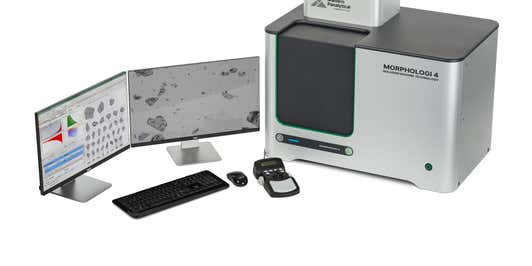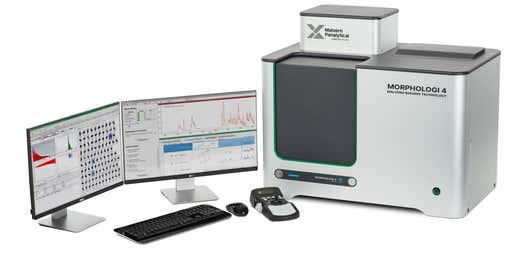
Both the development and commercialization of oral solid dosage formulations such as tablets, capsules and powders rely on understanding the state and form of the active pharmaceutical ingredient (API) and any active excipients. These fundamental characteristics impact the drug product’s long-term stability, as well as how effectively it can be processed into tablets or capsules, and also the dissolution behavior of the drug, which of course directly relates to bioavailability and efficacy.
The performance of a formulation may be manipulated or optimized by the physical and chemical properties of excipients and coatings. Excipients may help define the bioavailability, release profile and stability of a formulation, and coatings can affect where and how quickly the drug is released in the body.
Malvern Panalytical’s toolset of physicochemical analysis solutions aids researchers to make informed decisions about how the different processing steps affect the API and excipients, the overall blend, its processing behavior and final bioavailability, release profile, safety and efficacy.
Formulation excipient characterization & selection
To be confident in your results, you need robust and repeatable data that you can depend on. This is where Malvern Panalytical can help you in a number of ways, starting with understanding the quality of incoming material, such as the API or excipients you are going to use. Explore the links below to see how our physicochemical characterization solutions can help you understand if excipients or API are of the right quality for your project, if there are any differences between ingredients provided by different suppliers, or if the batch-to-batch consistency is up to your requirements.
Raw material and final product: powder characterization
Laser diffraction and morphological imaging are frequently used to check raw materials and compare different batches or different suppliers. The quick size distribution information delivered by laser diffraction is complemented by the more detailed information on the morphological distribution of particles from an automated imaging measurement – which has the additional benefit of enabling the component-specific chemical identification of subpopulations in the sample.
Featured content

Pharmaceutical Excipient Characterization
Answering the challenge of setting effective particle size specifications during pharmaceutical product development
Featured products
Mastersizer range

Morphologi 4

Empyrean range
Polymer-based excipient characterization
Polymer-based excipients are used for a variety of functions in oral solid dose drug products, from use as binders to add mechanical strength so that the tablet does not disintegrate during handling and storage, to colorants, taste processing agents or bulking agents to allow the handling of low amounts of API. Learn more about how multi-detector size exclusion chromatography allows in-depth characterization of polymers to help link structure to performance.
Featured content and key products

OMNISEC
Understanding the effect of molecular weight and structure on the performance characteristics of cellulose derivatives using OMNISEC
Using triple detection GPC/SEC to determine the molecular weight and structure of chitosans
Stability studies across formulation and process development
Featured content and key products

Empyrean range
Automatic condensation-free combined temperature-humidity control for XRD studies
Stability analysis during process development
Malvern Panalytical’s physicochemical characterization tools are frequently used to measure the stability of both APIs and excipients in a formulation, across the manufacturing workflow, to map the available design space for process parameters to ensure that the final drug product meets its required critical quality attributes (CQAs).
Excipients can affect the stability of the API during processing steps such as compression and wet granulation, altering the crystallinity or amorphous state and polymorphic forms of an API. Characterization of these parameters using X-ray powder diffraction systems such as our Empyrean or Aeris will ensure that there is no compromise to drug stability or safety.
Featured products

Empyrean range
Mastersizer range

Morphologi 4-ID

Zetasizer range
Comparability studies to support process, formulation or material changes, and in vitro bioequivalence studies
Any process may require changes, such as a supplier change for an excipient or API, an equipment change, a move between manufacturing sites, or a minor change in formulation composition – all these changes must be monitored and controlled to ensure no impact on the final drug product.
Malvern Panalytical’s physicochemical solutions are all used regularly to help with these types of questions. In addition, our technologies are also used to investigate generic product bioequivalence in vitro; for example, to confirm that a generic product and device combination deliver the drug in the same manner as the innovator product and device. If successful, this type of study can reduce the amount of clinical testing required.
Featured content
Rapid Generic Pharmaceutical Product Development
Achieving Bioequivalence in Generic Formulations by Characterizing Particle Size, Shape & Chemical Identity
Understanding the functionality of suspension-based pharmaceutical products
Confirming the pharmaceutical equivalence of Oral Solid Dose (OSD) products using MDRS and the Morphologi 4-ID

What are the targeting methods used in solid form analysis?
Featured products
Mastersizer range

Morphologi 4-ID

Empyrean range

Zetasizer range





